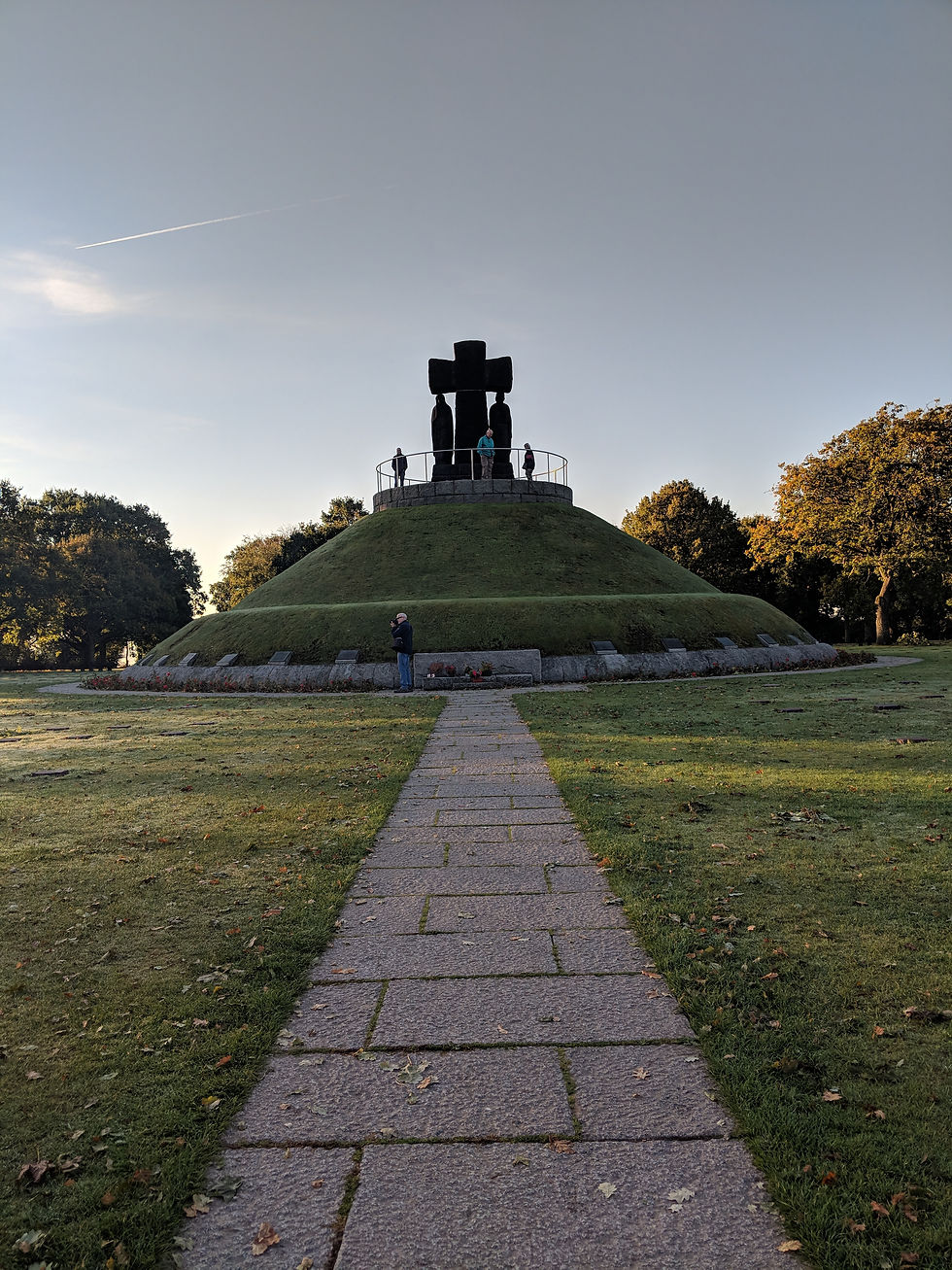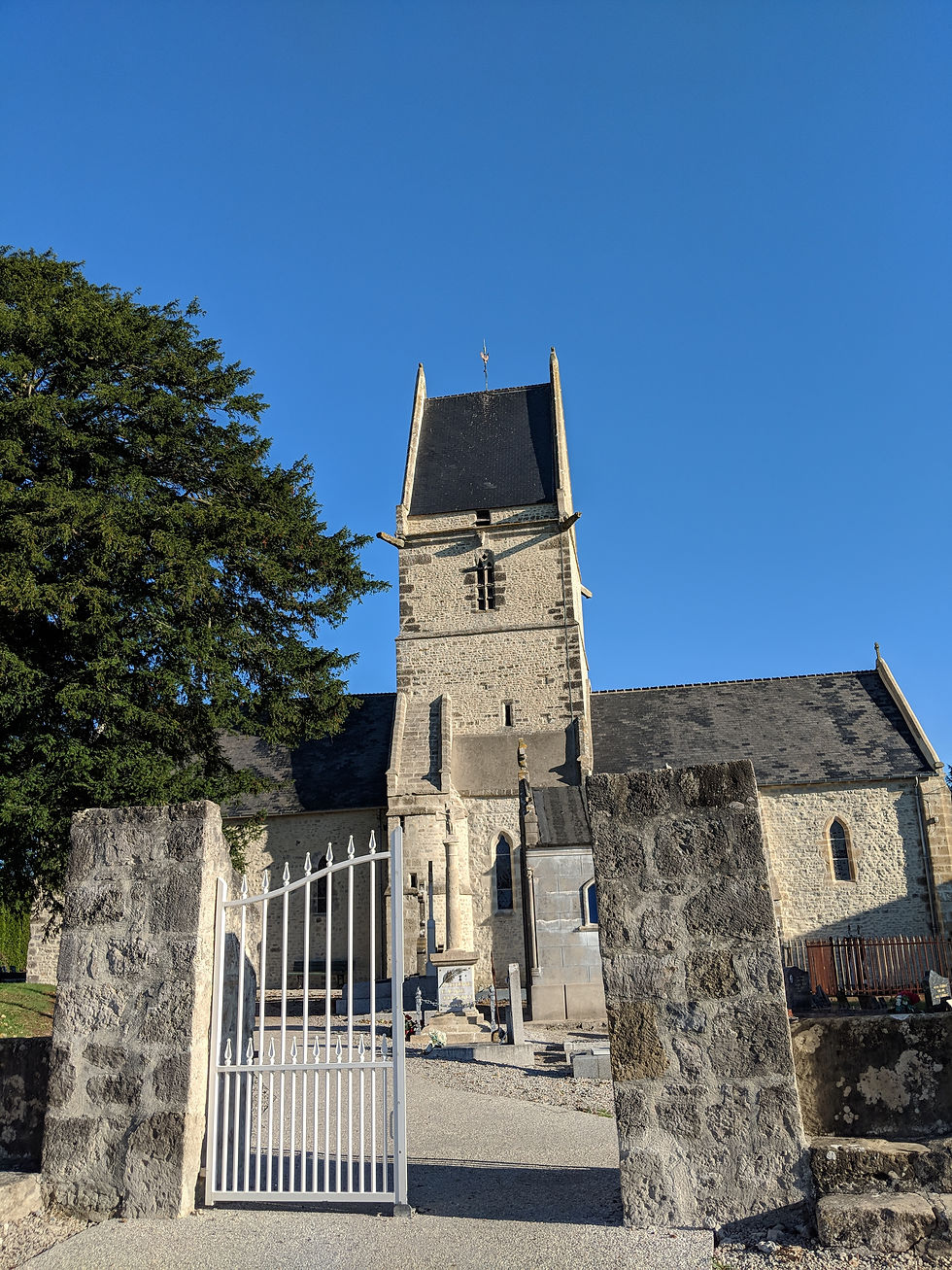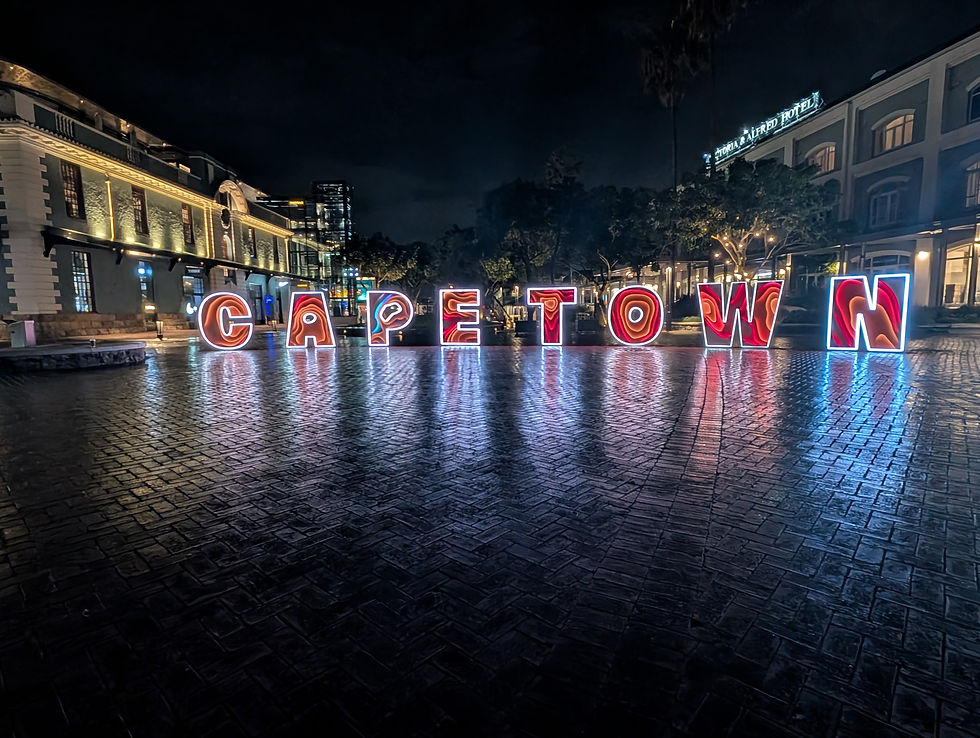Eurotrip 2018: Normandy
- Mike McHugh

- Oct 9, 2018
- 7 min read
The time was finally here – I have wanted to visit the beaches of Normandy since I learned about D-Day in middle school, but I was never able to swing the trip while I was in Paris due to time constraints. This time, I planned the trip and made sure I allotted a full day and a half to travel to Normandy and take a proper tour. We left Paris in the evening and caught the last train of the evening from Paris to Bayeux where we walked about a mile and a half from the train station through the sleepy town to our hotel. We arrived pretty late, so we decided to grab dinner at the hotel before retiring for the evening. The following morning, we walked to the tour pickup point where we had prebooked a full day tour with Bayeux Shuttle which focused on the American invasion of Normandy. Our tour guide was named Mike and you could immediately tell it was going to be a great, informational day based on how passionate he was before we even left the parking lot.
Our first stop was the German War Cemetery in Normandy, La Cambe. After the war was over, about 12,000 German soldiers were buried across Normandy across over 1,000 locations. All the countries that lost men in the invasion were given the opportunity to relocate all their dead into one centralized cemetery as a way to honor them, but I was surprised the Allied Forces allowed the Germans this privilege. As relations were being rebuilt, this was a small olive branch. One of the main caveats that the Allies had for the Germans was that the grave stones could not be white because the Americans used white grave markers, so the Germans made their grave markers black out of basalt lava. There was a large monument in the middle of the cemetery in memory of all the fallen German soldiers. Despite the fact that they were on the wrong side of history, the soldiers were still people’s sons, brothers and husbands.



After leaving the cemetery, our tour guide brought us to a small church in the town of Carentan-les-Marias named Angoville-au-Plain. What happened in this church makes you question whether or not something or someone is up there keeping a watchful eye over us. This church was turned into a Red Cross aid station during the Allied Invasion & it was in this church that two American medics, Robert Wright & Ken Moore, from the 101st Airborne division treated over 80 soldiers. The most impressive part of this story is that these two medics had less than two months of training and not one soldier under their care died. A local girl who was being treated by them passed away due to injuries that simply could not be treated, but the medics saved 80 soldiers lives over the course of the 3 days they were holed up in the church. To add to this story, a German soldier barged through the door at one point &, despite the church being protected as a medical treatment site, the people holed up in the Church thought it was over. The soldier left & came back shortly after, with an injurged German soldier. The American medics proceeded to treat many German soldiers who were also injured in battle. It is truly a remarkable story and gives me goosebumps as I type this. The church has been preserved, blood stains still mark the pews, cracks are still left in the ground from falling debris & the stained glass that was damaged during the battle has been replaced with new glass honoring the remarkable life saving events that took place in that building. When Robert Wright, one of the medics, passed away in 2013 at the age of 89 his remains were transported back to the grounds of this church, Angoville-au-Plain, where he was laid to rest just a few yards away from the building he and his friend performed a miracle. To this day, people visit his gravesite to pay respects and even leave tokens and trinkets at his grave including a 101st airborne hot sauce which was left by a current member of the same unit.




Our next stop was Utah Beach, the site of one of the key American invasion targets during D-Day. Of the five designated landing areas of the Normandy invasion, Utah Beach was the westernmost target. The first part of the invasion was airborne drops of parachuters from different infantries. Many soldiers missed their landing targets as the weather was not ideal and they could not see their landing zone. This, combined with a poor design of parachutes, meant that many soldiers met their untimely end as they landed in swamps and could not get their parachutes off so they drowned. When it came to the amphibious invasion, Utah Beach was the easiest beach to take of the five landing areas, but that does not mean it went according to plan. Due to strong currents & low visibility, the landing actually occurred about a mile east of the designated landing area. That being said, the defenses were not as heavy as originally thought & the soldiers manning them were non-German soldiers forced into service. Once things began to go sideways, they abandoned their posts and surrendered.




After spending time at Utah Beach, we boarded our van and went to our lunch spot. The tour company actually purchased the cafe from a famous picture that was socialized after the war, Cafe J Philippe Epicere. They tried to restore the cafe to how it once was to the best of their ability. I’ve included my picture along with the famous black and white picture below:


After lunch, we traveled to the town of Santie-Mere-Eglise which was the first French town liberated by the Allies. Unfortunately, there were mass casualties for the paratroopers that attacked the city in the middle of the night. There was a fire during the invasion, so everyone was awake and German soldiers could easily see the invading army from above. The town was taken without resistance by ground forces later that morning, though. The town is best known for the movie, The Longest Day, where one of the paratroopers was caught on the church belltower and unable to cut himself free. He survived by playing dead the whole time until the Allies took the city. It is a true story, although the side of the belltower the soldier was caught on was different in the movie than real life. The town put up a fake soldier and parachute on the belltower so tourists can visualize what happened.

I did come across an American veteran of the war during my time in the town. He was traveling with his family, but I had the opportunity to thank him for his service. I think it meant more to his son than it meant to him. Our next stop was Pointe du Hoc in Cricqueville -en-Bessin, which was part the Utah Beach invasion. The site is maintained by the American government & was left as it was after the battle. When you walk the grounds, you walk around massive craters that were made by bombs, you can also go inside German war bunkers and artillery batteries. The magnitude of the craters was mind boggling – it is impressive that anyone made it out alive. We also saw the cliffs that the American soldiers had to scale as part of the invasion. I could not imagine having to climb up the cliff with no safety equipment, but the even more amazing part of the story is that they climbed it with their guns and heavy backpacks on.



Our next stop was definitely the saddest, most emotional part of the tour – the Normandy American Cemetery & Memorial. As previously mentioned, after the war was over the various countries that lost soldiers during the D-Day invasion and subsequent battles relocated the bodies of their dead to a single cemetery for each country. The Americans were no different in that they did this too, but they were the only country to offer to bring their dead home so they can be laid to rest alongside their family members. All in all, 9,388 American service members were laid to rest at the cemetery. All their bodies are not facing the beach it overlooks, Omaha Beach, but face eastward towards their home, America. Each body has a white grave marker either in the shape of a cross or the star of David and all but 307 gravestones have their name, unit, rank, home state & date of their death. The other 307 gravestones are for unknown soldiers and say “Here rests in honored glory a comrade in arms known but to God”. The graves are not organized by rank, unit or alphabetical order to show one life was not more valuable than another, but the only consideration was that bodies of family members were buried next to each other if at all possible. 30 of 45 pairs of siblings & one father / son are buried alongside each other. At the edge of the cemetery, there is a memorial to all the soldiers that were missing in action at the time of the cemetery's dedication. 1,557 servicemembers names are inscribed on the wall & there are bronze rosettes next to 19 of the names to indicate that their bodies have been recovered. Due to genetic testing, a sailor’s body was laid to rest in June next to that of his twin brother. Before leaving the cemetery, we witnessed the Flag Lowering Ceremony.


After the cemetery, it was time to visit the last stop on our tour – Omaha Beach, the target beach directly to the east of Utah Beach. The taking of this beach did not go nearly as smoothly as Utah Beach. Again, landing boats missed their targets due to poor weather and strong currents. The beach was heavily fortified and defended by German soldiers, unlike at Utah Beach. A few boats and tanks hit mines during their initial assault of the beach, leading to mass casualties. At one point, the order was made to pull back the war ships as they were having trouble hitting their targets and were sitting ducks. One of the generals disobeyed direct orders, pulled his ship parallel to the shore and launched a heavy assault on the battlements on land. This was the turning point of the battle & the tide finally swung in the American’s favor. At the end of the day, about 5,000 lives were lost in the invasion.


This concluded our tour & our guide dropped us off at the train station to catch our train back to Paris.
Our day tour of Normandy was the best tour I have ever gone on in my life. Our guide brought the story to life and really made me appreciate the sacrifice the 156,000 Allied forces that were part of D-Day were prepared to make & 12,000 ultimately made. 2,499 American forces died during D-Day alone. I am forever grateful for their selfless acts to protect my freedom and the values I take for granted every day of my life.
.png)



Comments